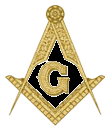
Lodge Burroughs Strange No. 87
Vijayawada, India


Article on Freemasonry - 57
Pythagoras, the Enlightened Mason
by W.Bro. M.V. Narasimha Iyengar, P.A.R.G.Std. Bearer,The love of truth is inherently the love of god ; and so predominating over every desire of the soul, purifying it, and assimilating it to the divine, thus governing every act of the individual, it raises man to a participation and communion with divinity, and restores him to the likeness of God. The soul dwells in "the grave which we call the body" and in its incorporate state, and previous to the discipline of education, the spiritual element is 'asleep'. Life is thus a dream rather than a reality. The soul cannot come into the form of a man if it has never seen the truth. By making the right use remembered from the former life, by constantly perfecting himself in the perfect mysteries by contemplation, a man becomes truly perfect - an initiate into the diviner of Wisdom.
Mysteries are observance, generally kept secret from the uninitiated, in which were taught by a dramatic representation and other methods, the origin of things, the nature of the human spirit, its relations to the body, and the method of its purification and restoration to higher life.
Hence, we may understand why the sublimer scenes in the mysteries were always in the night. The life of the interior spirit is the death of the external nature ; and the night of the physical world denotes the day of the spiritual and this perhaps is the reason why Lodges are held after dusk, and spiritual light could be obtained only at night.
Pythagoras is Truly the Enlightened Mason.
Ennemoser says: " Into Egypt and the East went Herodotus Thales Parmenides, Empedocles, Orpheus and Pythagoras, to instruct themselves in Natural Philosophy and Theology". There, too, Moses acquired his Wisdom and Jesus passed the earlier years of his life. Pythagoras brought his doctrines from the eastern sanctuaries, and Plato compiled them into a form more intelligible to the uninitiated mind, than the mysterious numerals of the sage - whose doctrines he has fully embraced.
It is admitted on all hands that from time immemorial the distant cast was the Land of Knowledge. And it must be due to this fact that the lodge faces the east.
Pythagoras awakened the deepest intellectual sympathy of his age, and his doctrines exerted a powerful influence upon the mind of Plato. His cardinal idea was that there existed a permanent principle of unity beneath the forms, changes, and other phenomena of the universe. He taught that "numbers are the first principle of the entities". Ritter has expressed the opinion that the formula of Pythagoras should be taken symbolically, which is doubtless correct. Timoeus said "God formed things as they first arose according to forms and numbers". Modern science recognises that all the higher form of nature assume the form of quantitative statement. Numbers were regarded as the best representations of the laws of harmony which pervade the Cosmos. We know too that in Chemistry the doctrine of atoms and the laws of combination are actually, defined in numbers. The world is then through all its department, a living arithmetics in its development, a realised geometry in its repose.
The key to the Pythagorean dogmas is the general formula of unity in multiplicity, the one evolving of the many and the pervading of the many. The Apostle Paul accepted this as true - "Out of him and through him and in him all things are".
The mystic Decade 1 + 2 + 3 + 4 = 10 is a way of expressing this idea. The One is God ; the two, matter ; the three combining the one and the two and partaking of the nature of both is the phenomenal world ; the Four or tetrad is the form of perfection and expresses the emptiness of all ; and the Decad, or sum of all involves the entire Cosmos. The Universe is a combination of thousand elements, and yet the expression of a single spirit, a Chaos to the senses, a Cosmos to the reason. Speusippus seems to have added aether an elements ; so that there were five principal elements to correspond with the five regular figures in Geometry. The philosophers of these days thought that the one (monad) did not exist ; nor till he had united with the many and the emanated existence (the monad and the Daud) was a being produced. This honoured manifestation dwells in the centre as in the circumference, but it is only the reflection of the world soul.
Xenocrates held the Pythagorean Doctrine and his system of numerals and mathematics in the highest estimation. He gave to the soul of man, the intellect formed of the three qualities - Thought, Perception and Knowledge by Intuition, or in other words Intelligence, conscience and will ; and the five organs of the outward perception. The relation of numbers to ideas was developed by him, and by reducing them to their ideal primary elements, he demonstrated that every figure and form originated out of the smallest indivisible line. He was the first to originate the theory of indivisible magnitudes. The Human Soul with him is a compound of the most spiritual properties of the Monad and Daud, possessing the highest principles of both. He utterly despised everything except the highest virtue, and describes the stainlessness and severe austerity of his character.
The Cosmological theory of numerals which Pythagoras learned from the Egyptian hierophants is alone able to reconcile the two unites matter and spirit, and cause each to demonstrate the other mathematically.
The harmony and mathematical equiformity of the double evolution spiritual and physical are elucidated only in the Universal numerals of Pythagoras, who built his system entirely upon the so called "Metrical speech" of the Hindu Vedas. Martin Haug undertook the translation of Aitareya Brahmana of the Rig Veda, and his explanations established beyond doubt or dispute the identity of the Pythagorean and Brahmanical Systems. In both, the esoteric significance is derived from numbers ; in the former, from the mystic relations of every number to everything intelligible to the human mind ; in the latter, from the number of syllables of which each verse in the Mantras consists.
Plato, the ardent disciple of Pythagoras, realised it so fully as to maintain that the Dodecahedron was the geometrical figure employed in constructing the Universe. Some of these figures had a peculiarly solemn significance for instance "Four", of which the Dodecahedron is the trine, was held sacred by the Pythagoreans. It is a perfect square, and neither of the bounding lines exceeds the other in length, by a single point. It is the emblem of moral justice and divine equity geometrically expressed. All the power and great symphonies of physical and spiritual nature lie inscribed within the perfect square ; and the ineffable name of Him, which name otherwise, would remain unutterable, was replaced by this sacred number 4 the most binding and solemn oath with the ancient mystics - the Tetractys.
In the Vedas, Aitrays Brahmana Mantra “ā | ayám | gáuḥ | pṛ́śniḥ | akramīt" (Rig Veda Mandala 10 | Sukta. 189 | Rik 1), there is positive proof that so long ago as 2000 B. C. the Hindu sages must have been acquainted with the rotundity of the globe and the heliocentric system. Pythagoras and Plato know well this astronomical truth ; for Pythagoras obtained his knowledge from India from men who had been there and Plato faithfully echoed his teachings.
In this translation of the Rig Veda (Aitareya Brahmana) Dr. Haug was forced to express "the denial of the existence of the sunrise and sunset and hence must be supposed that the sun must always remain in its high position (Meridian). The Veda says "The God Agnistoma is that one god who burns. The sun never sets nor rises. For having arrived at the end of the day, it produces too opposite effects, making night to what is below and day to what is on the other side. How true the dictum that the sun is always at its meridian with respect to freemasonry.
